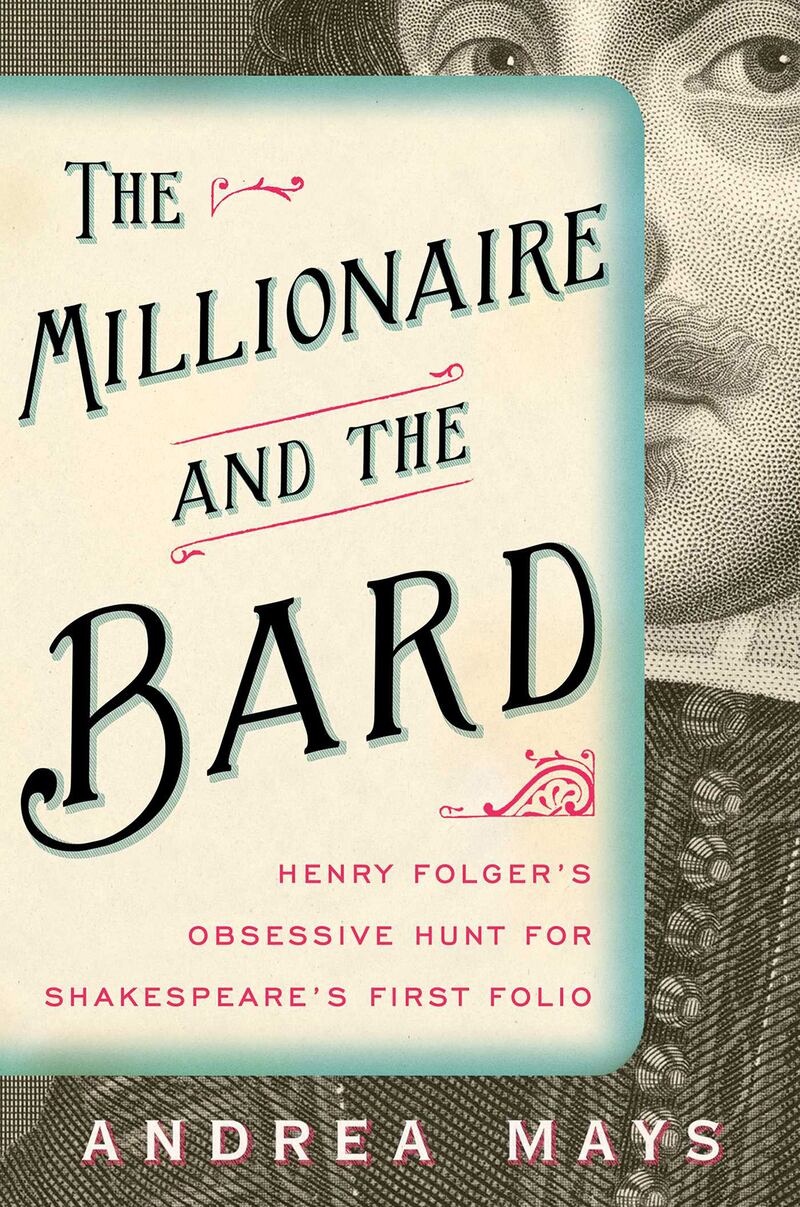Imagine an Elizabethan playwright named Shaxpere who wrote a soliloquy that began like this:
To be, or not to be, Ay, there’s the point,To Die, to sleepe, is that all? Ay, all:No, to sleep to dreame, I mary there it goes.For in that dreame of death, when wee awake,And borne before an everlasting Judge…
Here the Prince of Denmark’s anguish sounds almost fussy—is that all?—and meanderingly casual—I mary there it goes. This is Hamlet after several pints, his speech slurred and sloppy, starting to forget what he was saying mid-sentence. In the second line, he awkwardly answers his own question, then switches his reply: Is that all? Ay, all: No, to sleep to dreame. The first and third lines just dribble off into vapid filler: there’s the point, there it goes. And the confident assertion that we will appear before an everlasting Judge sounds odd; doesn’t Hamlet’s fundamental anxiety stem from not knowing what we will encounter after death?
This version of the text comes from the 1603 “bad” quarto of Hamlet. Scholars speculate that bad quartos may have been produced when a minor actor in a popular play was paid by piratical publishers to reconstruct from memory the entirety of a text. These editions were then printed and sold as the genuine play.
If Hamlet existed only in this clunky incarnation, would we remember him at all? And if “Shaxpere” was never smoothed into the elegantly elongated variant “Shakespeare,” would he be quite so popular?
Compare the bad copy above to the familiar version of the soliloquy from the first published collection of Shakespeare works, known as the First Folio:
To be, or not to be—that is the question:Whether ‘tis nobler in the mind to sufferThe slings and arrows of outrageous fortuneOr to take arms against a sea of troublesAnd by opposing end them. To die, to sleep—
This is the familiar Hamlet; his speech is poised, richly metaphorical, and mercifully free from the tipsy chattiness of the 1603 edition. But the more articulate Hamlet almost never existed; this version of the play barely survived into modernity. Approximately 750 copies of the First Folio were printed in 1623. They were about 9 inches by 13 inches, more than 900 pages, and sometimes bound in calfskin. Today, around 244 survive, most of them damaged and missing pages.
The publication of the First Folio was undertaken by two of Shakespeare’s friends and fellow actors in the King’s Men, John Heminges and Henry Condell. As fellow shareholders in the theater company, both men would have enjoyed access to his original handwritten manuscripts, prompt copies used to prod forgetful performers, and “sides,” documents containing only the lines of a particular character used by actors. When these sources failed, they too might have relied on memory to complete the texts of various plays.
The remaining copies of the First Folio have become shockingly expensive. In the mid-18th century, a copy of the First Folio was still so cheap that the impoverished bibliophile Samuel Johnson could afford one. In 2001, a well-preserved one was auctioned for $6.1 million. A fascinating new book by Andrea Mays, The Millionaire and the Bard: Henry Folger’s Obsessive Hunt for Shakespeare’s First Folio, explores two related phenomenon: the gradual cultural deification of Shakespeare and the relatively rapid transformation of rare editions into cult objects coveted by wealthy collectors.
Roughly 50 years after Shakespeare’s death, his reputation was far from canonical. Theater directors sometimes took the liberty of largely rewriting his work; Romeo and Juliet was given a happy ending, for instance, with the star-crossed lovers marrying rather than killing themselves. Publishers, meanwhile, felt free to invent entirely new plays and attribute them to Shakespeare. The London Prodigal; The Life and Death of Thomas, Lord Cromwell; The Puritan; A Yorkshire Tragedy—these are not familiar Shakespeare titles for the excellent reason that he never wrote them. But a Third Folio, published in 1663, included these and other spurious plays. In a fit of bad literary judgment, Oxford’s Bodleian Library sold its First Folio and replaced it with the Third Folio.
The first known performance of Shakespeare in the American colonies was a production of Romeo and Juliet in New York City that dates to 1730. But it wasn’t until the middle of the 19th century that his reputation was firmly established on both sides of the Atlantic. Thomas Jefferson and Ralph Waldo Emerson were only two of many cultural celebrities who sang the Bard’s praises (it was George Bernard Shaw who coined the term “bardolatery” to describe the secular worship of Shakespeare).
Prices for a First Folio rose in tandem with the Bard’s reputation. But no single individual did more to create a frenzied market for these rare books than an American named Henry Folger, who was born in Manhattan in 1857. Henry was a member of the same extended family that made a fortune in the coffee business in San Francisco, but he grew up in Brooklyn and got a solid liberal arts education at Amherst College. He loved Shakespeare and often carried a volume of his plays everywhere so to that he could read during any stray moments.
Folger found work at Rockefeller’s Standard Oil after law school at Columbia and soon began rising in the company. He became a trusted confidant of John D. Rockefeller himself and profited richly from the booming oil market of the late 19th century. This allowed him to subsidize a collecting habit. A major theme in Mays’ narrative is the trans-Atlantic exchange between American money and European culture. Many wealthy American industrialists used their money to purchase European paintings, sculptures, furniture, and rare first editions. J. Pierpont Morgan supposedly spent around $1 million a year on rare books at the height of his collecting career.
Folger was different than most other wealthy collectors in several ways. He was motivated by a genuine love of Shakespeare and could converse knowledgeably about the minutiae of Elizabethan history and the Bard’s every play. He didn’t buy rare editions of Shakespeare merely as a form of social display; most ended up in a warehouse in Brooklyn. Most famously, he created the Folger Library in Washington near the end of his life to benefit scholars and the public for generations.

The size of his collection was truly staggering; he left 256,000 books and 60,000 manuscripts to the Folger Library. In fact the library has still not finished cataloging his entire collection. He was a detail-oriented and fanatical collector, often seeking out English aristocrats with fine libraries who owned Shakespeare editions he wanted. He made headlines in 1919 for paying $100,000 for a rare early edition of Shakespeare known as the Pavier Quarto. This would be the equivalent of roughly $1.4 million in today’s money. It was actually the second time in his career that he paid a record price for a single book.
By the end of his career he had accumulated 82 First Folios, roughly a third of all the extant copies in the world and more than even the British Library. Some critics, especially English ones, painted Folger as a crude capitalist who plundered the literary treasures of England for his own aggrandizement. Mays, not to mention the Folger Library itself, convincingly refutes the depiction of Henry as a greedy millionaire with no sense of public spirit. There are worse ways to spend one’s millions.
Mays is an engaging writer and careful researcher, and her story meticulously reconstructs Folger’s long career as a collector of Shakespeariana. She also supplies many interesting details about theater in Shakespeare’s time, such as the lovely detail that the term “box office” derives from the payment system at the Globe, where patrons who wanted a seat would drop a penny into boxes later counted in a back office. The original box office gross was measured in pennies.
Folger was an eccentric and admirable millionaire whose final gesture of public-minded generosity still commemorates his lifelong obsession with Shakespeare. Just as Folger carved verses from Shakespeare into the stone of his library, Shakespeare too saw his verse as something of a monument. The 81st sonnet ends like this:
Your monument shall be my gentle verse, Which eyes not yet created shall o’er-read, And tongues to be your being shall rehearse, When all the breathers of this world are dead; You still shall live (such virtue hath my pen) Where breath most breathes, even in the mouths of men.






